Did you know that green onions can be harvested year-round, providing a continuous supply of fresh, flavorful onions in your own backyard? Whether you’re a seasoned gardener or just starting out, growing green onions at home is a rewarding and straightforward process. In this beginner’s guide, I will share easy tips and best practices for successfully growing green onions, from planting to harvesting. Get ready to enjoy the delicious, homegrown goodness of green onions in your favorite dishes!
Key Takeaways:
- Green onions can be harvested year-round, ensuring a constant supply of fresh onions.
- Growing green onions at home is suitable for both experienced gardeners and beginners.
- Following the right techniques and care, you can enjoy the flavorful taste of homegrown green onions.
- This guide will provide easy tips and best practices, from planting to harvesting.
- Get ready to elevate your dishes with the addition of freshly grown green onions!
About Green Onions
Green onions, also known as scallions, bunching onions, spring onions, or Welch onions, are an evergreen perennial crop native to Asia. Unlike regular onions, green onions do not grow rounded bulbs but instead have a skinny bulb with long, flavorful green leaves. They have a mild onion flavor and can be eaten raw or cooked in various recipes. The entire green onion, including the bulbs and greens, is edible.
Key Features of Green Onions:
- Also known as scallions, bunching onions, spring onions, or Welch onions
- Evergreen perennial crop native to Asia
- Skinny bulb with long, flavorful green leaves
- Mild onion flavor
- Can be eaten raw or cooked
- The entire green onion, including the bulbs and greens, is edible
Types of Green Onions
When it comes to choosing the right green onions to grow, there are several varieties to consider. Each variety has its own characteristics and flavor profiles, allowing you to select the perfect green onion for your culinary needs.
Crimson Forest Scallions
Crimson Forest Scallions are an eye-catching variety with bright green foliage and deep red stems. These scallions add a vibrant pop of color to salads and stir-fries, while still delivering that classic green onion flavor.
Evergreen Long White Bunching Onion
The Evergreen Long White bunching onion is a reliable choice for green onion enthusiasts. This variety produces long, white bulbs and tall green stalks, making it perfect for both culinary and decorative purposes.
Ishikura Bunching Onions
A Japanese variety, Ishikura Bunching Onions can grow up to two feet tall and can even be overwintered in colder climates. With their impressive height, these onions are a great addition to any garden and provide an abundance of culinary possibilities.
Parade Bunching Onions
Parade Bunching Onions are known for their uniform-sized plants, featuring white stems and dark green foliage. This variety offers a classic green onion taste and is an excellent choice for consistent and reliable growth.
Tokyo Long White
Another Japanese variety, Tokyo Long White green onions have long, slender bulbs and blue-green tops. These onions are prized for their delicate flavor and are often used in Asian-inspired dishes.
Warrior Bunching Onions
For quick-growing green onions, Warrior Bunching Onions are an excellent choice. With slender white stalks and deep green leaves, these onions offer both visual appeal and a mild onion flavor.
When selecting green onion varieties, take into account their unique characteristics and flavors to ensure they meet your culinary needs and preferences.
Tips for Growing Green Onions
Green onions are a versatile and delicious addition to any garden. Whether you’re a seasoned gardener or a beginner, these tips will help you grow healthy and abundant green onions.
- Planting Methods
- Timing
- Soil Preparation
- Companion Planting
- Care and Maintenance
- Harvesting
- Regrowing Green Onions
Green onions can be grown from seeds, transplants, regrown from scraps, or by dividing clumps. Choose the method that works best for you.
Green onions can be planted any time during the growing season, as they are not daylight sensitive. Start seeds indoors 8 to 10 weeks before the last frost date or direct sow in early spring.
Select an ideal location with at least 6 hours of sunlight per day and well-draining soil. Prepare the garden bed by removing weeds and adding organic matter like compost to enrich the soil.
Consider companion planting green onions with spinach or strawberries. These plants help deter pests and provide a mutually beneficial growing environment.
Green onions are relatively low-maintenance. They generally do not require additional fertilizer but will benefit from regular watering and mulching around the plants to retain moisture.
You can harvest green onions at any stage, from small thin bulbs to larger mature bulbs. The entire onion, including the greens, is edible. Harvest by cutting the leaves about an inch above the soil surface.
Did you know you can regrow green onions from scraps? Simply place the white bulbous portions with the roots intact in a cup of water near a window. Within 24 hours, new green leaves will start to grow. You can replant them in soil for continuous harvests.
Green onions are a rewarding crop to grow in your garden. With these tips, you’ll be on your way to enjoying a bountiful harvest of fresh, flavorful green onions.
How to Regrow Green Onions in Water
Regrowing green onions from scraps in water is a simple and rewarding technique. By following a few easy steps, you can enjoy a continuous supply of fresh green onions right from your kitchen. Here’s how:
- Save the Scraps: Begin by saving the white bulbous portions of the green onions with the roots intact. These scraps will serve as the starting point for regrowth.
- Place in Water: Take a cup of water and place the green onion scraps in it. Make sure the roots are submerged and the bulbs are partially above the water surface. Position the cup near a window that receives ample sunlight.
- Observe New Growth: Within 24 hours, you’ll start noticing new green leaves emerging from the scraps. This exciting regrowth process signifies the success of your endeavor.
- Refresh the Water: Every 2-3 days, refresh the water in the cup to keep it clean and oxygenated. This helps maintain a healthy growing environment for the green onion scraps.
- Replant or Harvest: After a few weeks of regrowth, you have two options. You can choose to continue growing the green onions in water for a continuous supply of fresh leaves. Alternatively, you can replant the green onions in soil, which provides additional nutrients and encourages thicker shoots.
Regrowing green onions in water is a fantastic way to minimize waste and enjoy the satisfaction of growing your own food. By following these simple steps, you’ll have a steady source of flavorful green onions at your fingertips.
| Benefits of Regrowing Green Onions in Water |
|---|
| Eco-friendly: Reduces food waste and eliminates the need for constant repurchasing of green onions. |
| Convenience: Green onions can be regrown indoors, allowing easy access and a continuous supply. |
| Cost-effective: Saves money by eliminating the need to buy new green onion bulbs regularly. |
| Quick Results: New growth can be observed within a day, providing instant gratification. |
| Health Benefits: Freshly regrown green onions retain their nutritional value, including vitamins and minerals. |
Now that you know how to regrow green onions in water, you can embark on this exciting journey of self-sufficiency and sustainability. With a little effort and patience, you’ll be rewarded with an abundant supply of delicious green onions for your culinary creations.
Planting Green Onions
When it comes to planting green onions, timing is essential for optimal growth. Early spring and fall are the best seasons to sow your green onion seeds or transplant seedlings. In cooler climates, green onions can even withstand freezing temperatures and can be planted before the last frost date.
In addition to timing, providing the right growing conditions is crucial. Green onions thrive in a location that receives at least 6 hours of sunlight per day. Choose a spot in your garden that offers ample sunlight to ensure healthy and vigorous growth.
The soil requirements for green onions are relatively simple. They prefer well-draining soil with a pH balance between 6.0 and 7.0. Before planting, take the time to prepare the garden bed. Start by removing any debris or weeds from the area. Adding aged compost to the soil will provide essential nutrients for your green onion plants. Lastly, make sure to water the soil thoroughly to ensure it is moist and ready for planting.
Planting Methods
There are two primary methods for planting green onions: sowing seeds directly into the soil or transplanting seedlings. If starting from seeds, plant them about ¼ inch deep into the prepared soil. Space the seeds about 1 inch apart to allow room for growth.
If you prefer to use transplants, make sure they are properly hardened off before planting. This means gradually exposing them to outdoor conditions for a week or two before transplanting. Space the transplants about 4-6 inches apart to provide adequate space for each plant to grow.
After planting, water the green onion plants thoroughly to help them establish their roots. Throughout the growing season, maintain even moisture in the soil by watering regularly.
Planting Green Onions: Step-by-Step
- Choose the planting time: early spring or fall.
- Select a sunny location with at least 6 hours of sunlight per day.
- Prepare the garden bed by removing debris and adding aged compost.
- Water the soil thoroughly.
- Plant seeds ¼ inch deep or transplant seedlings, ensuring they are hardened off properly.
- Space seeds or transplants accordingly.
- Water the plants well after transplanting.
- Maintain even moisture in the soil throughout the growing season.
By following these planting guidelines and fostering the right conditions, you’ll be on your way to a bountiful harvest of fresh and flavorful green onions.
Caring for Green Onions
Green onions are a low-maintenance vegetable that requires minimal care to thrive in your garden. By providing them with the right attention, you can ensure a bountiful harvest of fresh, flavorful green onions. Here are some essential tips for caring for your green onions:
- Watering: Green onions require consistent moisture to grow properly. Water them regularly, ensuring the soil is evenly moist. However, be careful not to overwater, as this can lead to root rot. Aim to keep the soil moist but not waterlogged.
- Mulching: Mulching around your green onion plants can help retain moisture and suppress weed growth. Apply a layer of organic mulch, such as straw or shredded leaves, around the base of the plants. This will help conserve moisture in the soil and prevent competition from weeds.
- Fertilizing: Green onions generally do not require additional fertilizer if you have prepared the soil adequately. However, if you notice slow growth or pale leaves, you can apply a balanced liquid fertilizer once or twice during the growing season. Follow the instructions on the fertilizer packaging for proper application.
- Pest and Disease Control: Green onions are relatively pest and disease-free. However, it’s essential to monitor your plants for any signs of issues. Common pests that may affect green onions include aphids, thrips, and onion maggots. If you notice any infestations, you can use organic pest control methods or consult with your local garden center for appropriate treatments. Additionally, promptly remove any infected or damaged foliage to prevent the spread of diseases.
With these care practices in place, your green onions will grow healthy and vibrant, providing you with a continuous supply of delicious onions for your culinary creations.
Growing Green Onions in Containers
Green onions can be successfully grown in containers, making them a great option for those with limited space. Container gardening allows you to have a fresh supply of green onions right on your patio or balcony. Here are some tips for growing green onions in containers:
Container Requirements
To grow green onions in containers, choose a container that is at least 6 inches deep and has drainage holes. This will ensure proper root development and prevent waterlogging. A deeper container will allow the green onions to grow longer and develop more foliage. Consider using a wide container to accommodate multiple plants and increase your harvest.
Planting Green Onions in Containers
Fill the container with well-draining potting mix or compost. Green onions prefer loose, fertile soil that retains moisture without becoming waterlogged. Plant the green onions at the appropriate depth, burying the white part of the bulb just below the soil surface. Leave the green leaves exposed above the soil. You can plant multiple green onion bulbs in the same container, spacing them about 2 inches apart.
Container Placement and Sunlight
Place the container in a location that receives at least 6 hours of direct sunlight per day. Green onions thrive in full sun, which helps promote healthy foliage growth and encourages the development of strong flavors. If you don’t have access to full sun, green onions can tolerate partial shade, but they may grow slower and have less intense flavors.
Watering and Moisture Control
Water the green onions regularly to keep the soil evenly moist. Container-grown plants tend to dry out faster than those in the ground, so monitor the moisture levels closely. Avoid overwatering, as this can lead to root rot. Water the green onions at the base of the plant, avoiding overhead watering, which may cause the leaves to rot.
Using a self-watering container or adding a layer of mulch can help retain moisture in the soil. Mulch also prevents weed growth and keeps the soil temperature stable, which is beneficial for the green onions’ overall health.
Container Requirements for Growing Green Onions
| Container Requirements | Description |
|---|---|
| Depth | At least 6 inches to accommodate root development and foliage growth. |
| Drainage Holes | Prevents waterlogging and allows excess water to drain. |
| Wide Container | Allows multiple plants and increases your harvest. |
Growing green onions in containers is a convenient and space-saving way to enjoy these flavorful vegetables. By following these container requirements and providing the right growing conditions, you can harvest your own fresh green onions right at home.
Harvesting and Storing Green Onions
Once your green onions have reached a height of 6-8 inches, they are ready to be harvested. To harvest them, simply clip the green onions about an inch above the soil surface. The entire green onion, including the bulb and greens, is edible, so make sure to use all parts of the plant.
After harvesting, you have a few options for storing your green onions. If you want to keep them fresh for about a week, you can store them with their roots in water. Simply place the green onions in a jar or glass with enough water to cover the roots. Keep the jar in the refrigerator, and change the water every few days to keep it fresh.
If you have more green onions than you can use right away, you can also chop them and freeze them for later use. To freeze green onions, wash them thoroughly, chop them into small pieces, and spread them out on a baking sheet. Place the baking sheet in the freezer until the green onions are frozen solid. Then, transfer the frozen green onions to a freezer-safe container or bag and store them in the freezer.
Another great thing about green onions is that they can be regrown multiple times. After harvesting, save the white bulbous portions of the green onions with the roots intact. Place them in a cup of water near a window with a light source. Within 24 hours, new green leaves will start to grow. You can continue to regrow green onions in water or choose to replant them in soil for additional nutrients and thicker shoots.
Using Green Onions in Recipes
Green onions add a fresh and vibrant flavor to a variety of dishes. They are commonly used in Asian cuisines, but their versatility can be seen in various recipes. Here are a few ideas for incorporating green onions into your recipes:
- Add chopped green onions to stir-fries for a burst of flavor and color.
- Use green onions as a topping for soups, salads, or baked potatoes.
- Incorporate green onions into dressings or sauces for an added zing.
- Make scallion pancakes by mixing chopped green onions into a pancake batter and frying until crispy.
- Add green onions to omelets or scrambled eggs for a savory twist.
Get creative and experiment with different recipes to fully enjoy the fresh and delicious taste of green onions.
Conclusion
Growing green onions at home is an enjoyable and straightforward activity. By following the tips and best practices provided in this guide, you can cultivate a steady supply of fresh green onions with ease. Whether you opt to grow them from seeds, transplants, scraps, or by dividing clumps, green onions will flourish with proper care and attention. Don’t be afraid to experiment with different varieties and savor the versatility of this flavorful vegetable in your kitchen. Happy growing!

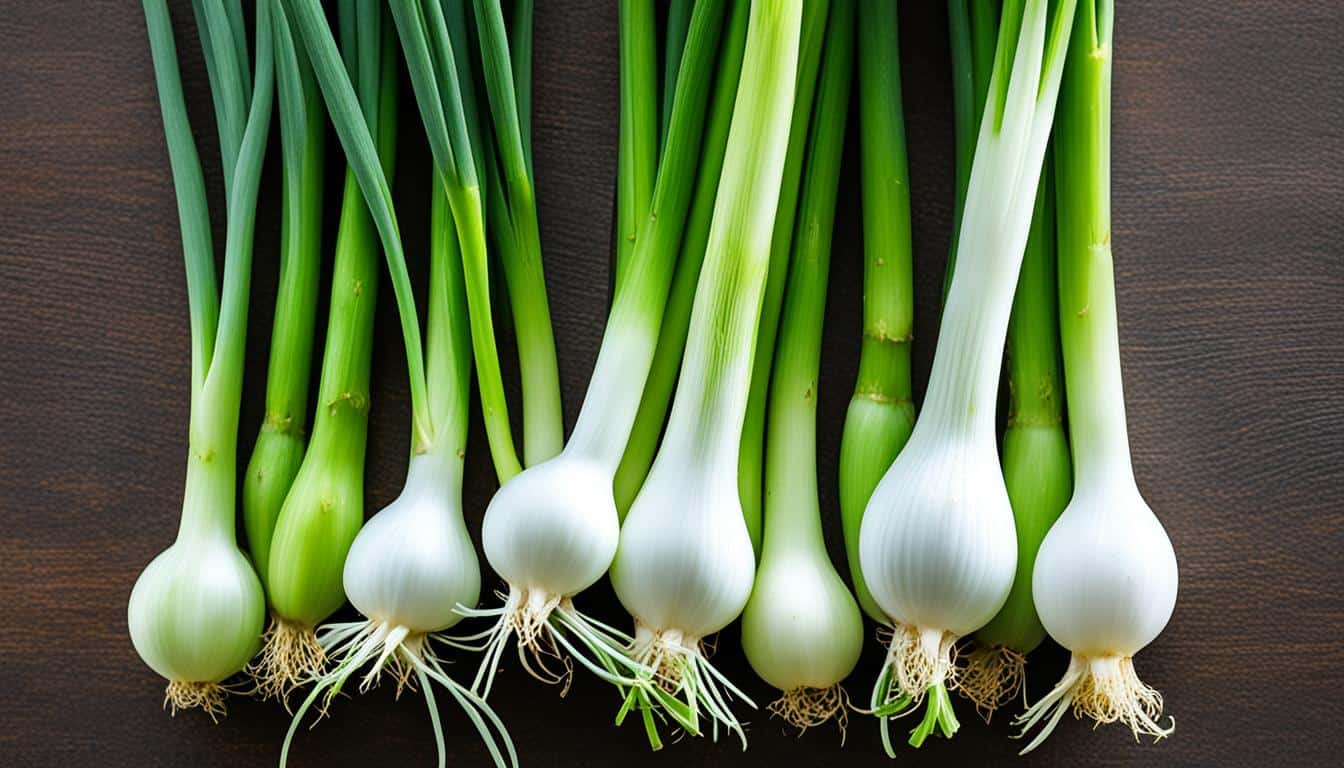
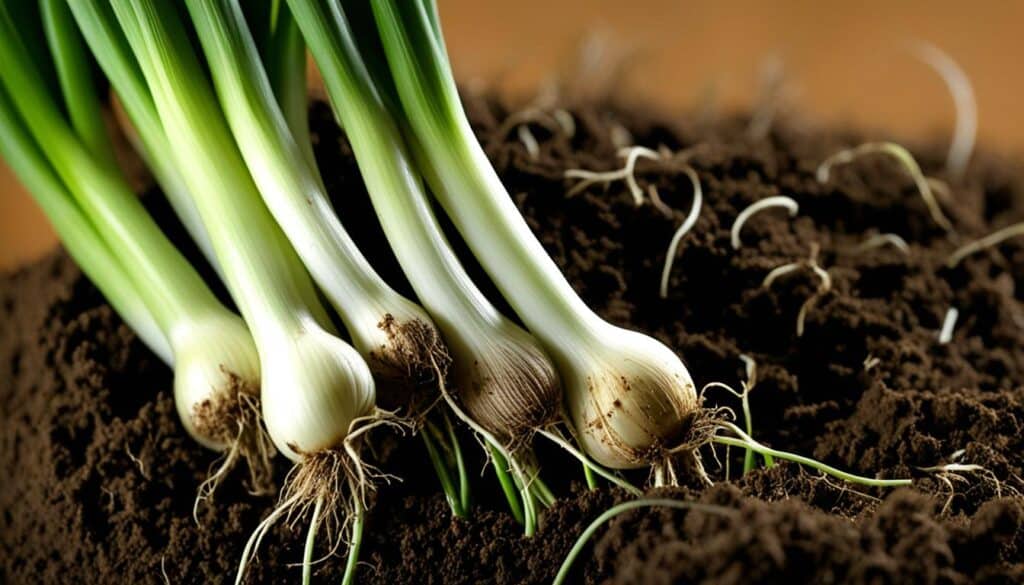
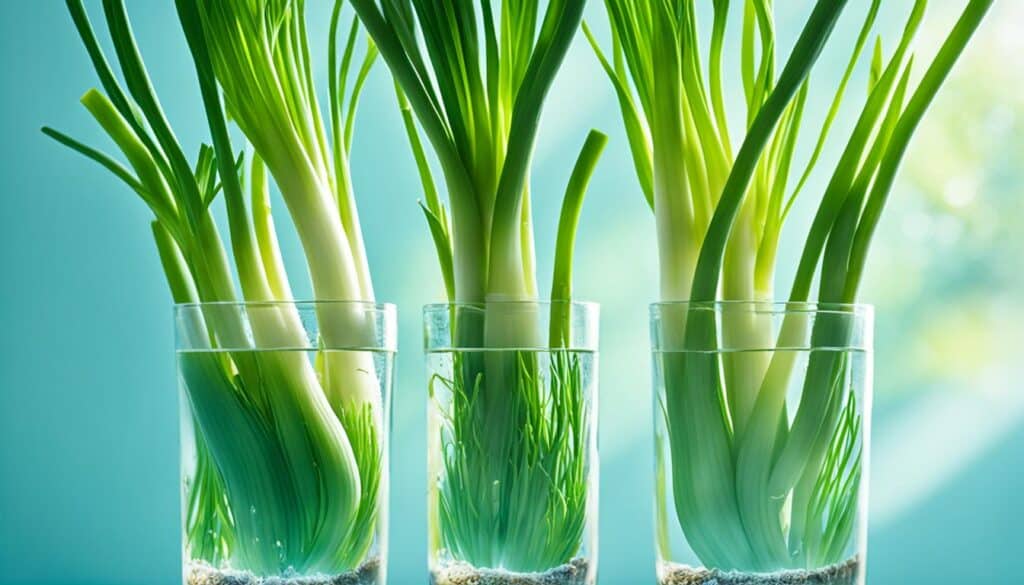
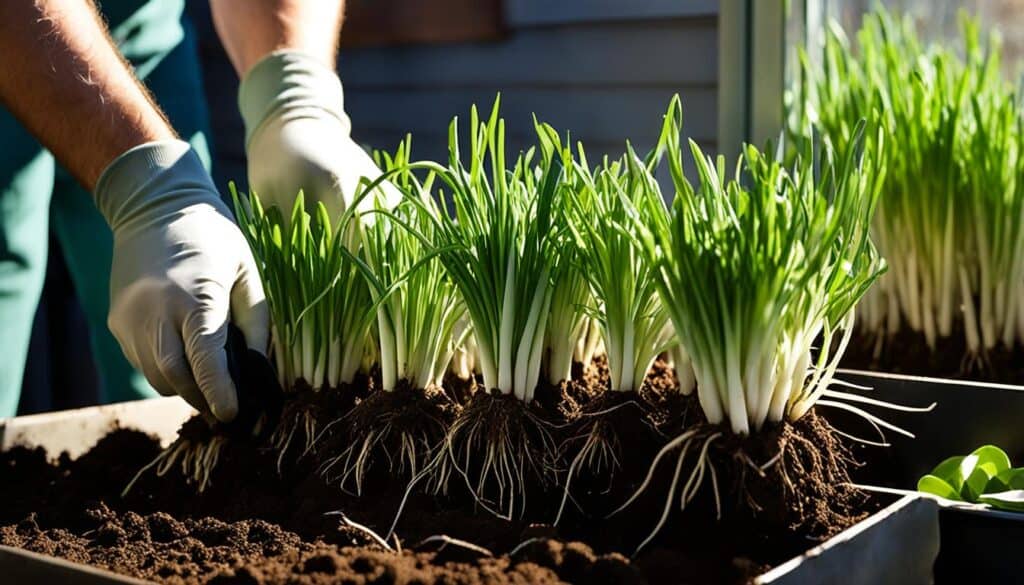
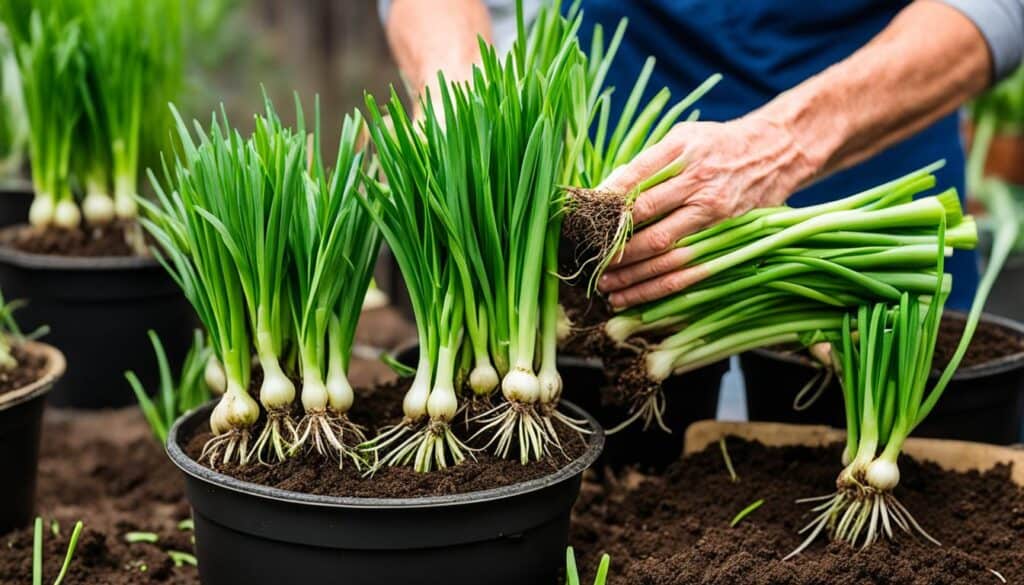




Leave a Reply